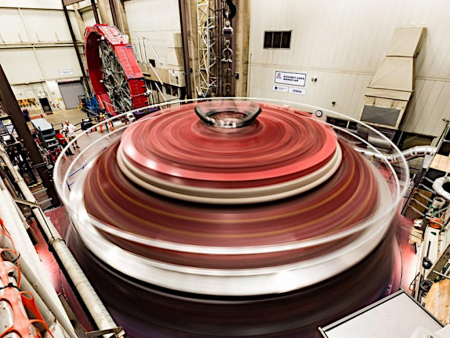Last Piece of the Giant Magellan Telescope Takes Shape

The Richard F. Caris Mirror Laboratory at the University of Arizona has started fabrication of the seventh and final segment of the primary mirror necessary to complete the Giant Magellan Telescope (GMT), the world's largest telescope.
On Sept. 11, this fleet of trucks parked outside Arizona Stadium, whose basement houses the UArizona's Richard F. Caris Mirror Laboratory, and unloaded their glittering cargo. Forklifts trundled across polished cement floors, carrying 20 tons of gleaming borosilicate glass cubes, dense and clear as cut ice. Careful hands sorted the glass, discarding impurities, and loaded it into a rotating furnace 40 feet across.
On Oct. 6, technicians will heat a 8.4m diameter mould containing 20 tons of borosilicate glass to 1165°C and the furnace will begin to spin. The glass will then be slowly cooled and the resulting cast mirror blank will be prepared for polishing. Over the following four years, the surface of the mirror will be polished to the desired final shape with a surface, accurate to 25nm. The mirror will then be shipped 5,000 miles to the Las Campanas Observatory in Chile's high desert to become the final segment of the 25m primary mirror required to complete the GMT.
At 50 million times the power of the human eye, six times the light-gathering area of the largest telescopes in existence today, and ten times the resolution of NASA's Hubble Space Telescope, the GMT will give astronomers glimpses of the earliest distant stars and galaxies and will bring them the closest yet to finding life in the universe.



